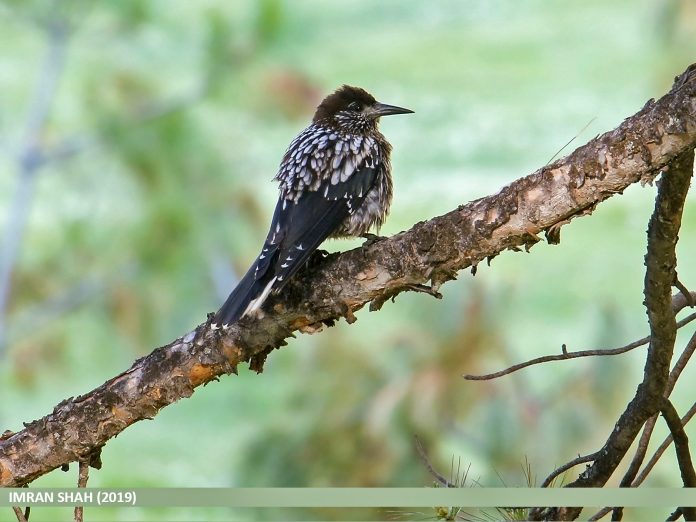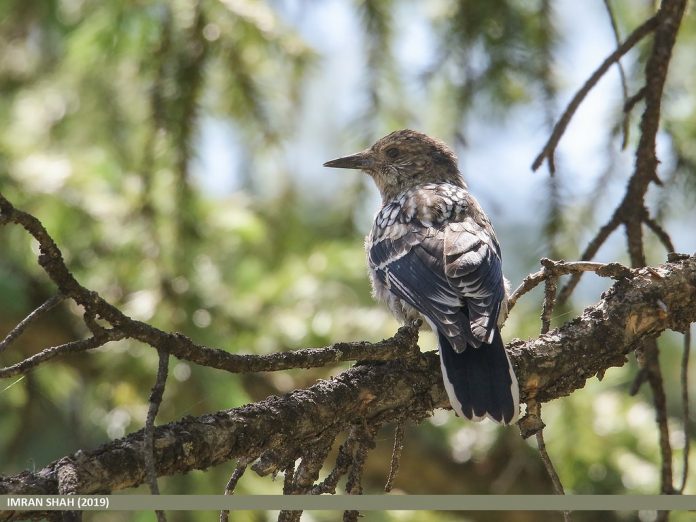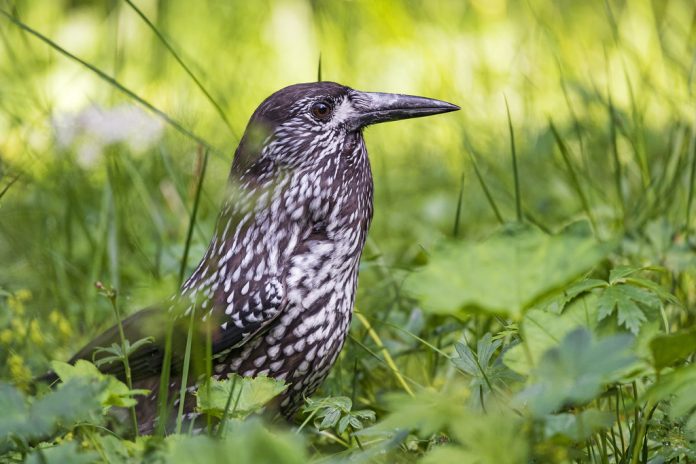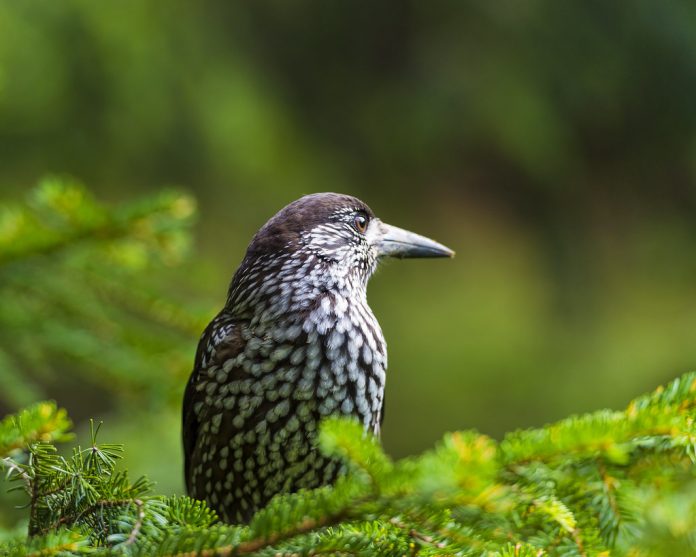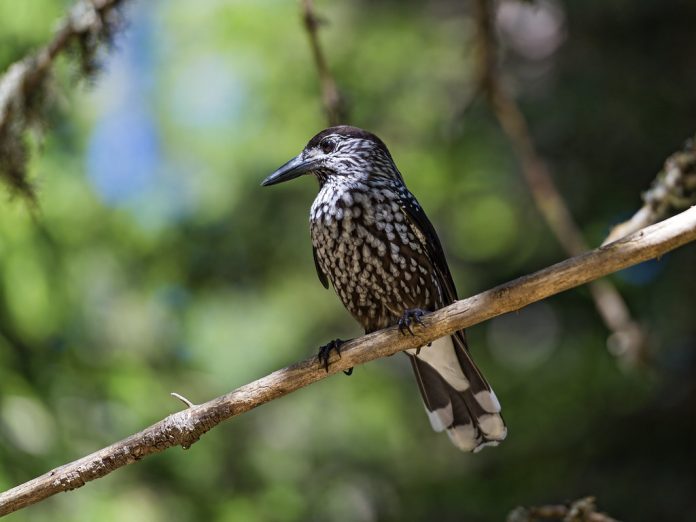The size of the Spotted Nutcracker (Nucifraga caryocatactes), Eurasian Nutcracker, is about 32 cm in length. This nutcracker is a distinctive Eurasian Jay-sized corvid of coniferous forests. At long ranges, it appears all dark with the white ventral region and tail corners. However, closer views reveal profuse white spotting over almost the entire body on a chocolate-brown background. The sides of the head, neck, and breast are often so intensely marked as to appear pale grayish at long ranges, contrasting with the unmarked dark crown and wings.
The bird has a moderately short tail and a long bill, giving it a distinctive silhouette when perched on a treetop or in flight. Flight action, size, and shape recall a short-tailed Eurasian Jay with a profound front end, but the white ventral region and most of the tail underside give, from below, the impression of a dark, stocky bird with a completely white rear end.
Also, the breeding grounds spotted nutcracker’s harsh call attracts attention, a bird more often than not calling from the top of a tall tree. Although usually shy and wary, wanderers during irruptions are often astonishingly tame and may be found in gardens as well as in forested areas.
The juvenile bird is a little browner and less intensely spotted with white by the first autumn as an adult, but many may be aged at close range by well-known white fringes to inner primaries and white spots on the median covert, which are absent in adults.
The call of the spotted nutcracker is a dry, harsh, rather prolonged ‘kraaaak’. Other calls include a prolonged purring churr of alarm. The geographical variation is rather slight. There are two races. Race macrorhynchos, taking place from Urals eastwards, although very similar, has a relatively longer and narrower bill and is subject to very occasional irruptions, taking it southwards and westwards almost right across Europe.
The locally spotted nutcracker is fairly common. In addition to the mapped range, Denmark has bred coniferous forests, particularly in hilly or mountainous regions (particularly spruce or arolla pine in the east). Access to hazelnuts is very important where arolla pine is absent.
Though the Siberian race infrequently exhibits irruptions when the main food supply (arolla pine cones) fails, sometimes numbers invade regions far from the normal range and may turn up anywhere with trees as well as gardens.
